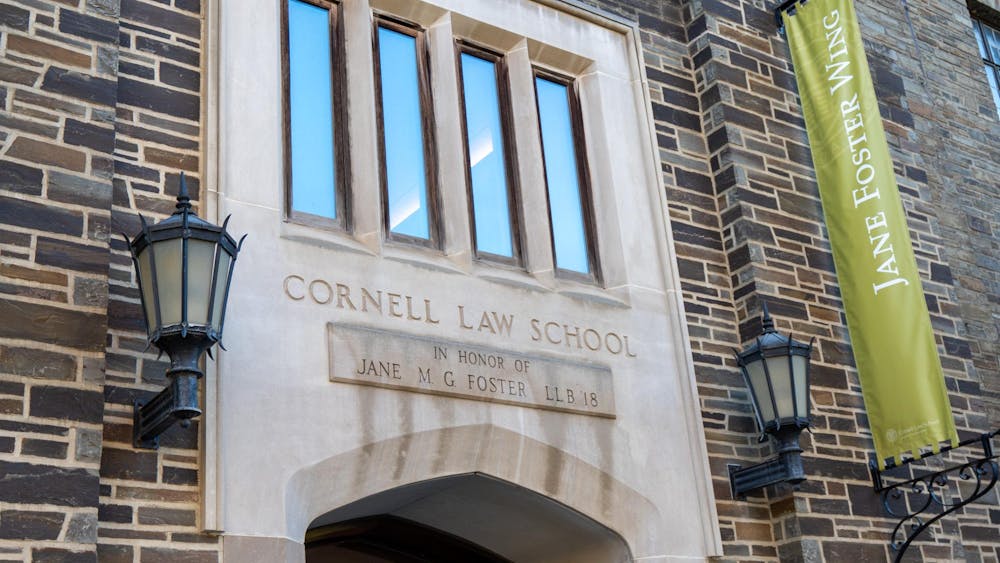Prof. Cindy Kao, design and environmental analysis, is extending her lab’s research on technology and design to uplift young Ithaca girls, and Prof. K. Max Zhang, mechanical and aerospace engineering, is redefining the limits of technology and energy. Across STEM fields, both researchers are breaking down barriers and engage local communities.
Kao directs the Hybrid Body Lab, which develops on-skin interfaces — delicate and thin wearable computers that the lab calls “smart tattoos.
Kao recently earned the early career National Science Foundation grant of nearly $500,000 to be issued over the next five years, dedicated to the development of toolkits to engage young girls and rural youth in interdisciplinary learning through on-skin interface workshops, according to the NSF. The workshops will occur in collaboration with the Ithaca Science Center and the New York State 4-H Youth Development organization.
One type of smart tattoo is a touch sensor, Kao explained, allowing the wearer to control a light, for example. Other tattoos measure ultraviolet exposure or provide haptic feedback — pinching the wearer’s arm, for example, when they have been on social media for too long.
“Our lab is situated in the intersections of design and technology,” Kao said.
Kao’s team works with local textiles artists to identify optimal weaving techniques and to help prototype the smart tattoos.
After developing initial prototypes, Kao’s team researches the social perceptions toward wearable technologies.
“With any type of technology, there is [hesitancy] toward it in the beginning,” Kao said.
Kao explained that the lab surveys users about comfort and accessibility to optimize tattoo designs. These studies that gauge user experience are being carried out in the U.S. and East Asia to account for cultural differences in how people perceive wearable technology.
“I was really drawn to the field of wearables, just because anything you put on your body is just [such an] intrinsic part of the human experience, and it's inseparable from design and art,” Kao said.
Kao said she hopes that the toolkits her lab is developing will foster inclusivity and empower young women to contribute to the future of wearable technology.
Meanwhile, Zhang’s lab is geared toward engineering energy solutions, with an emphasis on work that engages local communities. Zhang is the principal investigator at the Energy and the Environment Research Laboratory, which tackles projects in sustainable heating, energy and air pollution.
The lab’s research often involves computer models of indoor and outdoor environments, like the Comprehensive Turbulent Aerosol Dynamics and Gas Chemistry model, which allows researchers to better understand phenomena such as air pollution.
Zhang’s team is also focused on developing technology to uplift rural, BIPOC and low-income communities. One of the team’s projects is developing green infrastructure through the use of strategically placed trees to reduce particle pollution.
Zhang explained that a major driver for this work is the large number of school-age children — consisting disproportionately of low-income students — who face health risks from air pollution, often due to proximity of schools to busy highways.
“We’re seeing how we can introduce green designs, near roads, schools or other community [areas] to mitigate the air pollution impacts from highways,” Zhang said.
The Energy and the Environment Research Lab also aims to address the digital divide between urban and rural communities. Zhang said he believes that a key to solving this problem is a low-power wide-area network, a technology that enables data transfer over long distances without internet.
According to Zhang, this technology has further applications in rural areas, such as providing farmers with new ways to monitor their fields.
Zhang has also worked on the Tompkins County Energy Roadmap, which aims to reduce greenhouse gas emissions by 80 percent by 2050, relative to 2008 levels. He collaborates with a 12-member committee representing different sectors of Tompkins County to work toward reducing emissions.
Zhang said he sees community engagement as essential to solving the long-term energy problems facing the world.
“For a lot of people, energy is invisible … until something [goes] wrong,” Zhang said. “[It’s] enlightened me in how I can be part of the community and also make the community better.”











